7-minute read
The last time we wrote about inflation, there was some hope that it would be transitory. Well, we now all know better, right?
Over the past year, inflation has only become a bigger concern worldwide, and that was before the Russian invasion of Ukraine.
 Inflation issues have largely resulted from a culmination of labor and supply trends brought on by the COVID-19 pandemic, and they are clearly reflected within the U.S. Consumer Price Index (CPI). According to the latest data from the Bureau of Labor Statistics, the CPI for all urban consumers surged by 7% in 2021 — representing the largest increase over a 12-month period since 1982.
Inflation issues have largely resulted from a culmination of labor and supply trends brought on by the COVID-19 pandemic, and they are clearly reflected within the U.S. Consumer Price Index (CPI). According to the latest data from the Bureau of Labor Statistics, the CPI for all urban consumers surged by 7% in 2021 — representing the largest increase over a 12-month period since 1982.
Inflation poses a number of challenges for the commercial insurance market, affecting both insurers and their policyholders. With this in mind, it’s crucial for insureds – the business owner – to have a clear understanding of the impact of inflation and, as we said last summer, take steps to ensure adequate coverage.
Impact of Inflation on the Commercial Insurance Market
The last time we saw prolonged inflation, from the mid-1970s to the early 1980s, the insurance industry suffered a number of consequences, including reduced reserve levels, unpredictable claims trends and weaker underwriting performance, which translated into major losses for carriers.
Could we see the same problems today? Maybe, maybe not. One thing is certain: the longer inflation remains an issue, the greater the threat.
There are two lines of coverage where the greatest impacts are likely to be felt:
- Commercial property. As anyone in the construction business will attest, the cost to repair or rebuild any kind of structure following a loss has soared, in part because worker shortages within the construction industry have led to higher labor costs. At the same time, supply chain issues related to various essential building materials caused the price of these items to skyrocket. In particular, the National Association of Home Builders reported that the costs of lumber and steel have more than doubled during the pandemic. Such inflation is further evidenced by the latest BLS data, which shows a substantial CPI increase over the past year for a number of structural elements — including floor coverings, window coverings, major appliances and overall construction materials. Amid elevated property loss costs, insurers may experience poor underwriting results, forcing them to increase policyholders’ premiums and introduce additional coverage restrictions. With heightened repair and rebuilding costs increasing overall claim severity, policyholders may also find themselves facing potential underinsurance issues following larger property losses.
- Commercial auto. In the auto insurance market, vehicle repair expenses and claim costs also have surged. This trend is also predominately caused by worker shortages in the auto industry, generating higher labor costs and supply chain disruptions for several critical vehicle parts (and vehicles overall), leading to higher prices for such items. These concerns are reflected in an increased CPI throughout the last year for auto parts, motor vehicle repairs and used cars and trucks, according to the BLS. Compounding claim costs, accident frequency and severity have jumped in recent years, emphasized by rising crash rates and increased medical treatment expenses. Similar to the property insurance market, elevated loss costs could lead to a decrease in underwriting profits for auto insurers. Given that the commercial auto line has been largely unprofitable for the past decade or so, higher loss costs may cause auto insurers to raise premiums and limit their coverage offerings.
Although it’s currently making the most significant impact on the property and auto insurance markets, prolonged inflation will likely begin to affect additional segments — including workers’ compensation and liability insurance — over time.
Steps Insureds Can Take
Because the impact of inflation has the potential to include higher premiums, coverage restrictions and underinsurance concerns, it’s important for policyholders to do what they can to minimize such complications. Some steps that business owners can take include the following:
- Have policy renewal conversations early. Especially amid these challenging market conditions, policyholders should work with their insurance advisor to discuss the coverage renewal process well in advance. Doing so will allow insureds to stay properly informed on the latest inflation trends and give them ample time to prepare for potential policy changes — particularly as it pertains to pricing — prior to renewal. Going forward, policyholders may want to have quarterly meetings with their insurance advisor to ensure they are able to adjust their coverage as needed in this evolving inflation landscape.
- Review coverage terms and conditions. When meeting with their advisor, policyholders should also make sure to review their coverage terms and conditions, paying attention to any exclusions. Further, it’s crucial that insureds assess their policy limits (and sub-limits, if applicable) to determine whether they will be adequately covered following a loss. If you or your insurance advisor identifies underinsurance issues, you may want to update your coverage and consider purchasing policy endorsements to maintain proper protection.
- Reassess property valuations. Regarding commercial property insurance, policyholders should be sure that their coverage reflects correct property valuations. With property repair and rebuilding costs on the rise, insureds need to confirm the valuations utilized in their policies would be able to cover current recovery expenses after a loss. Otherwise, outdated valuations could leave you underinsured if the cost of repairing or rebuilding your properties exceed their existing coverage limits.
- Ensure adequate risk management practices. Lastly, policyholders should make sure they have effective risk management measures in place to prevent potential claims. By documenting these measures and sharing them with their insurers, policyholders may even qualify for premium discounts.
The Mahoney Group is one of the largest independent commercial insurance and employee benefits brokerages in the U.S. For more information, contact us online or call 877-440-3304.
This article is not intended to be exhaustive nor should any discussion or opinions be construed as legal advice. Readers should contact legal counsel or an insurance professional for appropriate advice.
